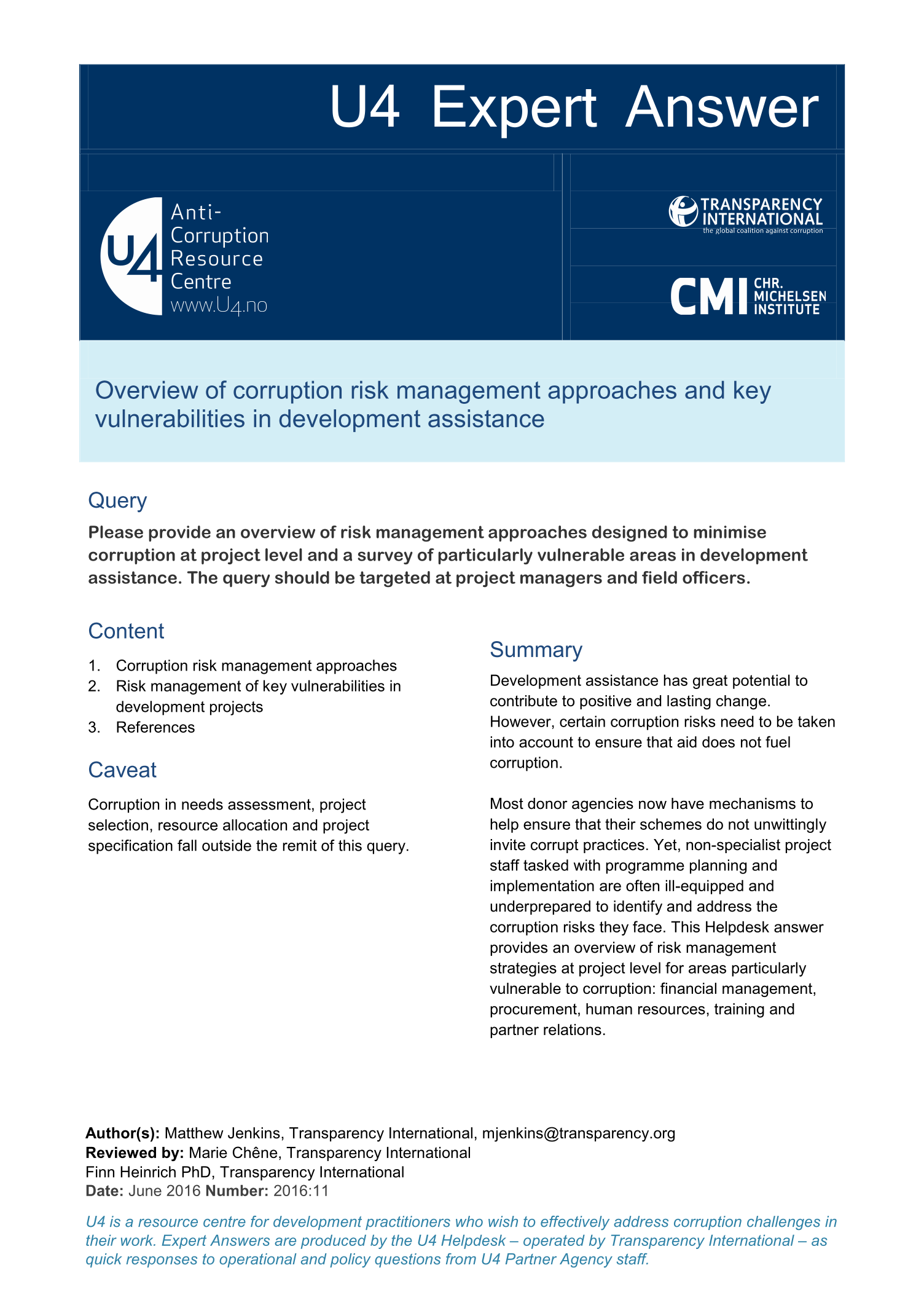U4 Helpdesk Answer
Overview of corruption risk management approaches and key vulnerabilities in development assistance
Development assistance has great potential to contribute to positive and lasting change. However, certain corruption risks need to be taken into account to ensure that aid does not fuel corruption.
Most donor agencies now have mechanisms to help ensure that their schemes do not unwittingly invite corrupt practices. Yet, non-specialist project staff tasked with programme planning and implementation are often ill-equipped and underprepared to identify and address the corruption risks they face. This Helpdesk answer provides an overview of risk management strategies at project level for areas particularly vulnerable to corruption: financial management, procurement, human resources, training and partner relations.

Cite this publication
Jenkins, M. 2016. Overview of corruption risk management approaches and key vulnerabilities in development assistance. U4 Expert Answer 2016:11
Disclaimer
All views in this text are the author(s)’, and may differ from the U4 partner agencies’ policies.
This work is licenced under a Creative Commons Attribution-NonCommercial-NoDerivatives 4.0 International licence (CC BY-NC-ND 4.0)


